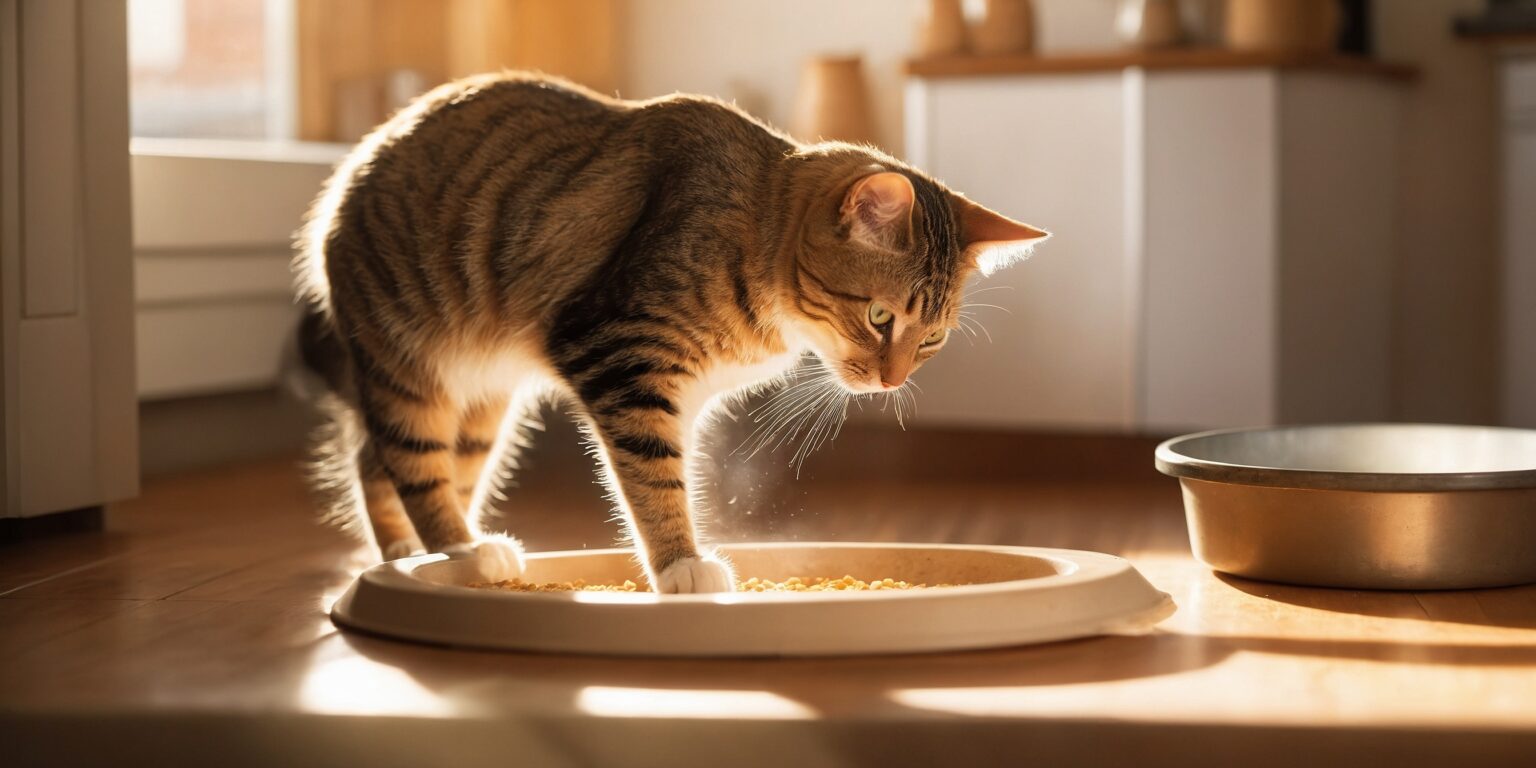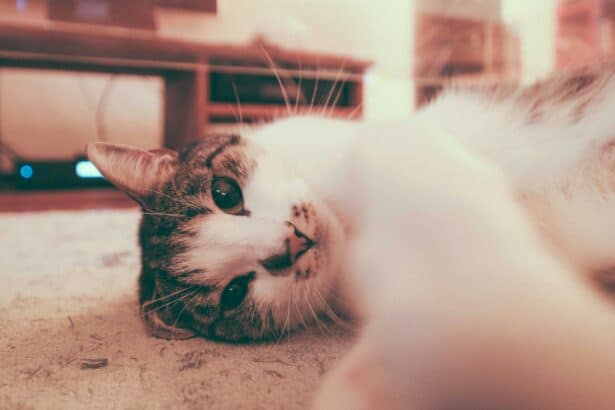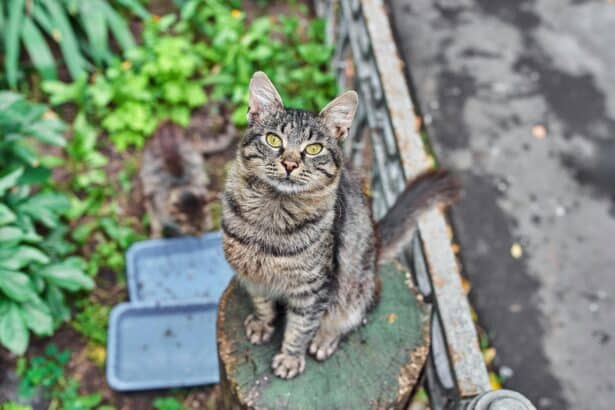Why cats scratch around their food bowl
Ever watched your cat finish a few bites and then start clawing at the floor like they’re burying treasure? It’s not random at all. Scratching around the bowl is a perfectly normal feline behavior with roots in survival, territory, and emotion.
- Why cats scratch around their food bowl
- Instincts first: caching and staying safe
- Territory talk: pheromones and ownership
- Food or bowl dissatisfaction
- The emotional side: stress, boredom, and attention
- How to help your cat and protect your floors
- Bringing it all together
- FAQ: cat scratching around the food bowl
Understanding this little ritual helps you respond calmly, protect your floors, and make mealtimes more peaceful for both of you.
Instincts first: caching and staying safe
- In the wild, cats often try to hide leftovers to avoid attracting larger predators and to save a snack for later.
- Domestic cats keep that ancient reflex, so “burying” the area around the bowl feels smart and safe to them.
- It’s not about being picky—it’s about being prepared, even in a cozy kitchen.
Fun fact: biologists have observed big cats covering prey with leaves or soil to mask the scent—your tiny tiger shares that same survival playbook. Curious about similar ground-scratching habits? See why cats scratch the floor.
Territory talk: pheromones and ownership
- When your cat scratches, glands between their paw pads release pheromones—like a scented “this is mine” note.
- It’s subtle but efficient: the area reads as safe and familiar at the next meal.
- In multi-cat homes, you may see more scratching as each cat defines their mealtime zone.
If you’re introducing a new feline roommate, smoothing that transition can prevent food conflicts. Try gentle, phased introductions with separate feeding stations—more tips here: introducing a new cat without conflict.
Food or bowl dissatisfaction
- Scratching can mean “not right now.” Temperature, texture, or a new recipe might not hit the spot.
- A bowl that’s dirty, smelly, or too shallow/too deep can be uncomfortable (whisker fatigue is real for some cats).
- Routine matters: some cats prefer predictable times, small portions, and a quiet corner.
Want to double-check you’re serving what suits them best? Here’s a helpful primer on what cats should really eat.
The emotional side: stress, boredom, and attention
Stress and food anxiety
- Changes at home (a move, visitors, a new pet) can make cats guard or “hide” their meal area.
- Noise near the bowl—washing machines, high-traffic hallways—can push them into scratch-and-bury mode.
- Offer a calm, consistent feeding spot away from litter boxes and busy zones.
Not sure if stress is creeping in? Here are practical signs and soothing ideas: signs of stress in cats.
Boredom or lack of stimulation
- Under-stimulated cats may turn mealtime into a game—scratching included.
- Food puzzles or slow feeders turn mealtime into a rewarding “hunt.”
- Short, playful sessions before meals can help them settle and eat calmly.
If you’re curious about gear that makes feeding more enriching, compare options in this guide to choosing a cat food dispenser.
Need for attention
- Some cats quickly learn: scratch around the bowl and the human looks over—mission accomplished.
- Try to respond when they’re calm and eating quietly, not when they scratch.
- Keep mealtime cues simple and consistent so your cat knows what earns praise.
Practical tip: serve smaller portions and remove leftovers after 15–20 minutes. Store the rest in the fridge and offer again later. This “portion-and-pick-up” routine reduces the urge to bury food and keeps it fresh.
How to help your cat and protect your floors
Observe, then adjust
- When do they scratch—before eating, after, or only with certain foods?
- Note changes at home: new scents, routines, or pets can be triggers.
- Track what improves things (timing, bowl type, flavor, location) and stick with it.
Upgrade the feeding setup
- Pick a stable, easy-to-clean bowl that doesn’t crowd whiskers; wash it daily.
- Place the bowl on a washable silicone mat or thin towel—give them a “bury zone” that’s safe for your floor.
- Keep water several steps away from food; many cats prefer separation.
Mistake to avoid: don’t punish scratching around the bowl. It’s instinctive, and scolding can raise anxiety and make mealtimes worse. Another common error? Constantly changing foods or moving the bowl—too much novelty can be stressful.
When to call the vet
- Red flags include obsessive scratching, refusing food, vomiting, diarrhea, or sudden weight change.
- Digestive issues, dental pain, or food sensitivities can all affect how and where a cat eats.
- Early advice prevents small issues from becoming big worries.
For a veterinarian-approved overview of healthy feeding routines, see Cornell Feline Health Center: Feeding Your Cat.
Bringing it all together
Scratching around the bowl is your cat’s way of saying “I’m careful,” “this is mine,” or “not now.” With a few gentle tweaks—better bowl, calmer spot, predictable routine—you’ll see calmer meals and fewer floor scratches.
And if you need a quick refresher on floor-scratching in general, this quick read on why cats scratch the floor pairs perfectly with the tips above.
FAQ: cat scratching around the food bowl
Is scratching around the bowl normal?
Yes. It’s a natural caching and territorial behavior that often means “I’ll save this” or “this is my space.”
How can I gently reduce the behavior?
Use a silicone mat, serve smaller portions, remove leftovers after 15–20 minutes, and keep the feeding spot calm.
Could the bowl itself be the problem?
Possibly. Try a clean, shallow, whisker-friendly bowl and wash it daily. Separate food and water by a few steps.
When should I worry and see a vet?
If scratching becomes obsessive, appetite drops, weight changes, or digestive signs appear, schedule a check-up.







